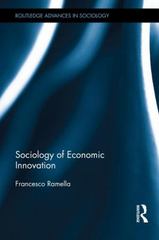Question
1. An insurer has learned that 30% of the population is at high risk for identity theft. The other 70% are relatively unlikely to incur
1. An insurer has learned that 30% of the population is at high risk for identity theft. The other 70% are relatively unlikely to incur a loss of this nature. The typical high-risk policy holder will claim $12,000 in losses over the life of a policy. Low-risk policy holders will on average only claim $4,000. Suppose the insurer offers two policies. One carries a $2,000 deductible and costs $2,500. The other carries zero deductible and costs $15,000. Assume each invididual values insurance by 150% of their expected loss, minus any deductible. (For instance, if the expected loss is $12,000, and there is a $2,000 deductible, they are willing to pay up to $15,000 for the policy.) What is the insurer's expected profit from the average policy when it offers this menu of policies, compared to when it charges $7,000 per policy with no deductible?
A. In both cases, there is on average a loss per policy of $500. B. In both cases, the average average profit per policy is $3,000. C. The insurer earns a profit of $1,250 per policy on average with the menu, compared to a loss of $5,000 per policy otherwise. D. The insurer earns a profit of $8,750 per policy on average with the menu, compared to a profit of $7,000 per policy otherwise.
2. The management of Choices Inc. can pay bonuses for customer service staff based on feedback scores or based on reversed cancellations. Good feedback and reversed cancellations both generate $12,000 in additional profit for the company. A hard-working employee has a 75% chance of getting a positive score, but only a 50% chance of reversing a cancellation. If the employee fails to put in full effort, then the likelihood of a positive score or a reversed cancellation is, in both cases, 25%. Assume an employee's utility function for income w is u(w) = sqrt(w), and the effort cost from working hard (in utility units) is 10. How much more profitable is Choices Inc. with bonuses based on feedback, instead of reversed cancellations? (I.e. what is the difference in profit if the manager always offers the smallest bonus that will induce the employee to work hard?) A. $3,000 B. $4,500 C. $9,000 D. $12,000
Step by Step Solution
There are 3 Steps involved in it
Step: 1

Get Instant Access to Expert-Tailored Solutions
See step-by-step solutions with expert insights and AI powered tools for academic success
Step: 2

Step: 3

Ace Your Homework with AI
Get the answers you need in no time with our AI-driven, step-by-step assistance
Get Started


